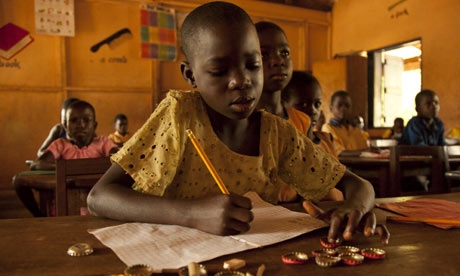
The Ministry of Education has planned to spend almost its entire budget for this year on staff remunerations, joining a long list of state institutions with minimal resources to undertake critical capital projects.
B&FT analysis of the Ministry of Education’s activities shows that only 3% of its GH¢6.4billion spending this year has been set aside for capital expenditure (capex), with the rest going into compensation packages for its workers and goods and services.
The spending pattern of the ministry, which makes and implements policy decisions of the government, reflects the situation in the education sector in which educational institutions — including all the public tertiary institutions — are spending their subventions on wages and salaries.
Out of the ministry’s total budget estimate of GH¢6.4billion, only GH¢220million –which translates into about 3 percent — will be put into capital expenditure. Out of that sum, donors have pledged a contribution of GH¢53million.
A lecturer of public accounts at the Ghana Institute of Management and Public Administration (GIMPA), Dr. Raziel Obeng-Okon, has described the ministry’s spending on infrastructure development as “woefully inadequate”.
“That notwithstanding, the capital expenditure is actually needed to stimulate the economy at all levels — including the MOE, for real GDP growth. The 3 percent of expenditure allocated to capex for the MOE is woefully inadequate to grow the infrastructure base of the ministry,” he added.
Out of the GH¢220million and GH¢1.2billion budgeted for capex and goods and services respectively, more than 75 percent and 89 percent respectively are expected from internally generated funds of the MOE — which means that government is putting more responsibility on the MOE to fund its own capex and activities outside the compensation of employees.
Government has often relied on the Ghana Education Trust Fund (GETFund) to finance capital projects in the education sector. Ironically, the good and services budget of the Ministry of Education even dwarfs that of the GETFund, which plans to spend GH₵843.9million; notably in infrastructural development as well as scholarships and other general administration expenses.
According to Dr. Obeng-Okon, the situation is a replica of the national budget where on a year by year basis a significant part of government’s revenue goes into compensations and employees emoluments.
In the last five years, an average of over 80 percent of government’s revenue was spent on compensation of employees and administration. It constituted about 60 percent of the entire expenditure of government, which implies that the allocation of 73 percent for compensation of employees in the budget to MOE is higher than the national average.
Dr. Obeng-Okon said capex typically requires a longer time to reap the benefit of real growth, and that government needs to encourage a certain reasonable minimum capex of not less than 20% of expenditure, at all levels of the economy, to unlock the potential of growing the real GDP.
Salary-skewed budget
Predictably, compensation of employees — mainly teachers and administrators, GH₵4.9billion — accounts for about 73 percent of the total budget while the rest of the budget, GH₵1.2billion, will be dedicated to purchasing goods and services; and the remaining GH¢334million will go to the Annual Budget Funding Amount (ABFA)..
There is close to 220,000 teachers employed in the public basic and secondary levels alone, which clearly explains why for every cedi government spends on education, 73 pesewas will be used to pay teachers, 19 pesewas to buy teaching materials, and about 3 pesewas will go into infrastructure development; the remaining 5 pesewas will go to pursue initiatives under the ABFA.
The ABFA amount is voted to general administration and finances expenses, as well as to support specialised education such as the schools for the blind and deaf among others.
Source: BFT




